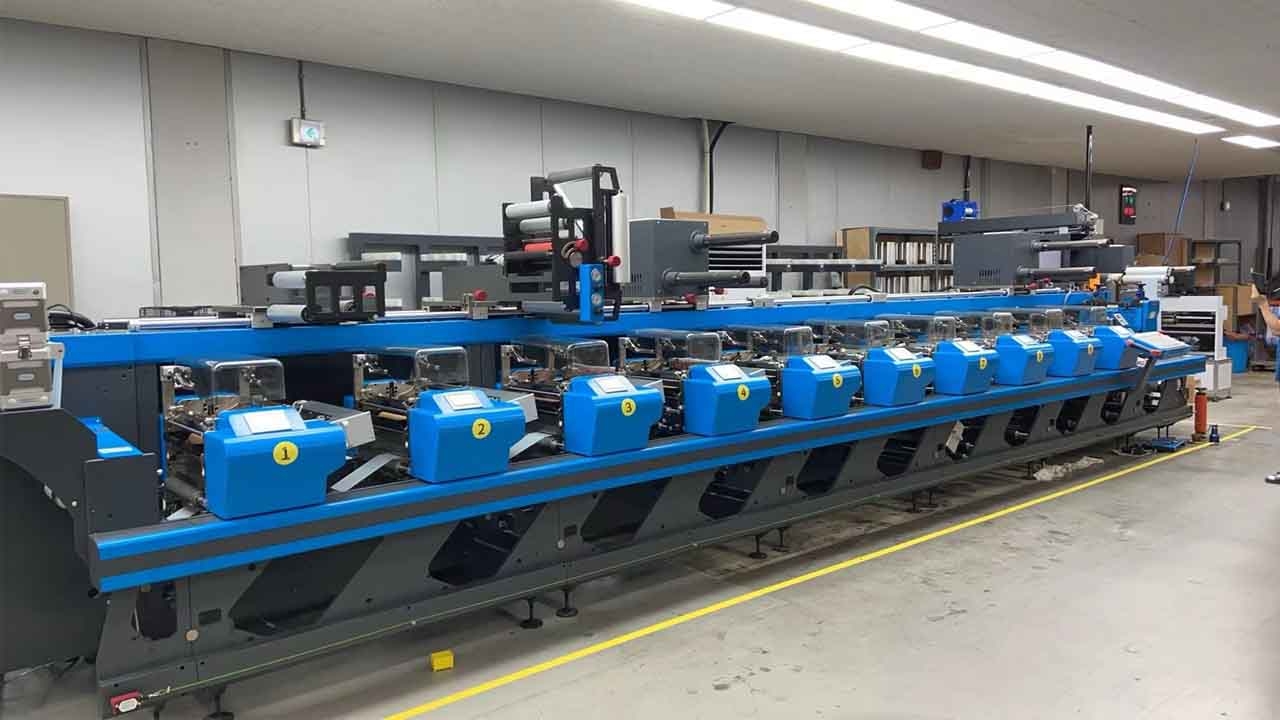KunBang masters Chinese art of IML

Kunbang, based in Shenzhen, was founded as a specialized label converter in 2002. It is now the country’s leading manufacturer of in-mold labels. Kevin Liu reports
In-mold labels – where the label is placed directly into the injection mold – is a relatively new technology in China. ‘We made our decision to enter the in-mold label market after careful consideration. Actually, the self-adhesive label only started to become popular in China in 2002, and many people thought that it was too early for us to produce IMLs,’ says CEO Jinrong Kuang. ‘Nevertheless, according to our research and observation, we think that the in-mold labels have more advantages than other kinds of labels, including waterproof properties and anti-counterfeiting. The in-mold label exceeds the performance of the self-adhesive label under some conditions. We believe that the in-mold label will occupy more market in the future.’
At present in China, in-mold labels are widely used in many fields including the packaging of personal care products such as shampoo, conditioner, cosmetics and essential oils. In the food sector, the big application is ice cream, while in the industrial sector IML has been utilized mainly for lubricants. ‘Our company, Kunbang has gained a lot of profits from the in-mold label market,’ says Kuang. ‘Because we entered the market early, and have developed excellent technology, Kunbang is now the largest company producing in-mold labels in Guangdong Province, with almost an 80 percent market share.’
Special requirements
The in-mold label has special process requirements compared to other labels, as it is integrated into the container rather than fixed to the packaging surface. The label is put into the plastic bottle injecting mold during the injection process. The in-mold label and bottle bodies blend and integrate to become part of the bottle. As the in-mold labels and packaging bottles are integrated, very thin films have to be used in place of paper printed materials. This in turn puts new demands on the label converter. ‘When we just entered this field, we knew little of the problems surrounding in-mold labels such as label adhesion problems caused by electrostatic effects, bubbles, etc,’ says Kuang. ‘Objectively, in-mold labels have some special requirements, and we are becoming more and more experienced with these.’ Kuang also pointed out that label manufacturers and machine manufacturers need to collaborate more. ‘In-mold label printing is just a small part of the entire process, so coordination between labeling and packaging manufacturers is pivotal.’
Machine shop
Kunbang now has two Japanese Kopack label printing presses, a Sun letterpress and Omet flexo press, allowing the company to print in a range of processes including flexography, letterpress, intaglio and silk screen. ‘Moreover, we are now utilizing advanced digital printing equipment,’ says Kuang, ‘We have to utilize all equipment to meet the diverse needs of our customers.’
There are no special requirements for printing equipment to produce in-mold labels. ‘Any machines which could print film labels could also print the in-mold label. However, there are special requirements in terms of ink, varnish and metallics between IML and normal self-adhesive labels.’
According to Kuang a qualified converter of in-mold labels should also be providing a wider range of services. For example, as a provider of labels to Walmart, Kunbang has won the retail giant’s cost control prize and best supplier prize for 2010. ‘This is because Kunbang not only produces the labels, but also designs and selects the raw materials for Walmart, which helps Walmart reduce their costs. These services are beyond the means of normal printing companies.’ Other special effects now offered by Kunbang include cold foil.
Conclusion
Although it is becoming more popular, in-mold labeling is nowhere near as popular as self-adhesive technology in China. Even Kunbang, the country’s largest in-mold label printing company, accounts just 20 to 30 percent of its gross sales to the technology, with its main sales coming from self-adhesive labels.
However, the manufacturing of in-mold Label is still at an early stage of the production cycle: it is a technology with a broad market potential and bright prospects.
This article was published in L&L issue 5, 2011
Stay up to date
Subscribe to the free Label News newsletter and receive the latest content every week. We'll never share your email address.


